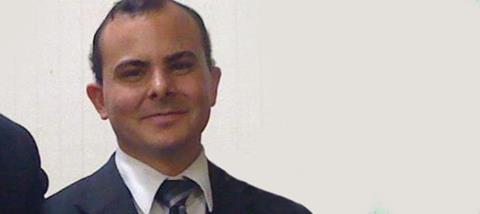
It’s quite likely that you’ve met a Mormon. Every young member of the Church of Jesus Christ of Latter-day Saints (LDS) is strongly encouraged to spend up to two years in missionary work somewhere in the world. With more than 15 million Mormons worldwide, it means that fresh-faced, clean-cut young men in suits – usually with a name badge and backpack – are not an uncommon sight in town centres, or even at your front door.
If you stop to talk to one, you may wonder just how different they are from Christians. After all, so much of the language and the beliefs seem common to both.
When Michael Flournoy, a young Mormon apologist, relates his conversion story, it’s difficult to distinguish his testimony from that of a typical evangelical Christian.
Born into an LDS family, Flournoy grew up attending a Mormon church. His conversion moment came during his teens at a youth camp: ‘While I was there, they were showing us this video, and the whole thing was about Jesus Christ. While I was listening, something spoke to me and I came to believe that night that Jesus Christ was my saviour.’
Flournoy says that he felt: ‘Overwhelmed at that moment with the weight of my sins and realising that he was perfect and majestic. I knew that he loved me at that moment too.’ He subsequently served his own two-year stint as a missionary in California.
So far so similar to the kind of testimony any Christian might be thrilled to hear from a young convert. So what difference does it make that Michael is a Mormon?
DEVIL IN THE DETAIL
All the difference in the world, according to those who, like Lynn K Wilder in the following article, believe that the LDS Church preaches a false gospel.
Among other things, there are the doctrines that seem to promote salvation by works rather than grace. Mormons believe they can earn an exalted state of salvation as they work towards ‘godhood’ in the next life by following Mormon precepts.
Perhaps even more significant is Mormonism’s nontrinitarian theology, which views Jesus as a created being. Growing up, Flournoy says that he always believed the Mormon view of Jesus: ‘I never had any sort of inkling that there was something else out there that could be more true than Mormonism, because my family and church leaders seemed to be of sound mind. It seemed ridiculous to me when people would say “Mormonism is a cult” or anything like that.’
It was while serving on his mission trip that Flournoy first came across a significant challenge to his faith. His group ran into an evangelical Bible scholar who spent three hours questioning their beliefs.
‘We were stampeded by these arguments,’ recalls Flournoy. ‘Up to that point I was a little naïve. I thought everybody liked the Mormon Church, and believed that we are just as Christian as they are. That really opened my eyes.’
Floored by the conversation, the young believer says he came away ‘95% convinced that the Mormon Church was not true’. An intense period of searching the Bible followed. By the end of it, Flournoy had in fact reached the opposite conclusion: that LDS doctrine is true, supported both by Mormon scriptures and the Bible. ‘As I searched, I continued to find things that supported my faith as a Latter-day Saint,’ he says.
THE MORMON JESUS
The LDS Church has officially rescinded its most controversial former doctrines, such as allowing polygamy and a ban on black people entering the priesthood. But how does Flournoy defend contentious Mormon doctrines such as Jesus being a ‘created god’?
Passages such as the prologue to John’s Gospel, which affirm Christ as a coeternal part of the godhead, seem to make clear the deity of Jesus. But Flournoy claims that the declaration, ‘In the beginning was the Word, and the Word was with God, and the Word was God’ (John 1:1), denotes only the beginning of the physical creation, not Christ’s eternal nature.
EVEN IF WE BELIEVE DIFFERENT THINGS ABOUT CHRIST, IT’S STILL THE SAME CHRIST
Flournoy also believes that the Book of Mormon and the other LDS scriptures impart extra revelation to the Bible. This is central to the Mormon faith; that the revelations of their founding prophet Joseph Smith corrected an apostate and wayward Church.
Nonetheless, Flournoy regrets that Mormons tend to hold their own scriptures in higher esteem than the Bible. ‘If the Bible is broken, we can say that new scripture was a necessary fix, but I think we’re just shooting ourselves in the foot because of that,’ he reflects. ‘We have a lot more to gain from a strong Bible than a weak one. It’s really the only physical evidence we can use to support the Book of Mormon.’
A COMMON CHRIST?
Despite the clear differences compared with orthodox doctrine, some Christians have been seeking to find common ground with Mormons in recent years. There are reports that some Mormon theologians are moving closer to an orthodox view of Jesus. Christian apologist Ravi Zacharias has twice been invited to preach at Salt Lake City’s Mormon Tabernacle, giving an unashamedly Christological message on both occasions.
Flournoy admits: ‘Maybe you guys are having an influence on us. I know that a lot of my evangelical friends have definitely had an influence on me. I’ve had to change some of my beliefs.’
Whatever differences remain, Flournoy insists that Christian and Mormons are peas from the same pod: ‘Even if we believe different things about Christ, it’s still the same Christ. I’ve never come across any valid argument that it’s a different Christ we worship.’
The first Mormon pioneers were known for rejecting Protestant denominations and founding their own religion in their own US state. However, today’s Mormons seem more concerned about finding common ground with mainstream Christians. To the uninitiated, Michael Flournoy’s testimony is hard to distinguish from that of any young evangelical convert. Maybe one day we won’t have to.
Who was Joseph Smith?
Joseph Smith founded Mormonism in the early 19th century. He claimed to have experienced a number of visions, including one in which he was directed by an angel to a buried book of golden plates. These plates were said to be inscribed with a Judeo-Christian history of an ancient American civilisation. In 1830, aged 24, Smith published an English translation of the plates, which became the Book of Mormon.
During his short lifetime, Smith set up the ‘Church of Christ’, which he described as a restoration of the early Church. He published a broad range of texts that were accepted by his followers as scripture, and Smith himself was considered to be a prophet.
In 1844, Smith angered non-Mormons by destroying a newspaper that had criticised him and the practice of polygamy. He was imprisoned and later killed when a mob stormed the jailhouse. By the time he died, tens of thousands of followers had joined the religion. They later became known as Latter-day Saints or Mormons.
MICHAEL FLOURNOY is an apologist in the LDS Church and author of A Biblical Defense of Mormonism (CreateSpace). He blogs at mormondefense.blogspot.com





























